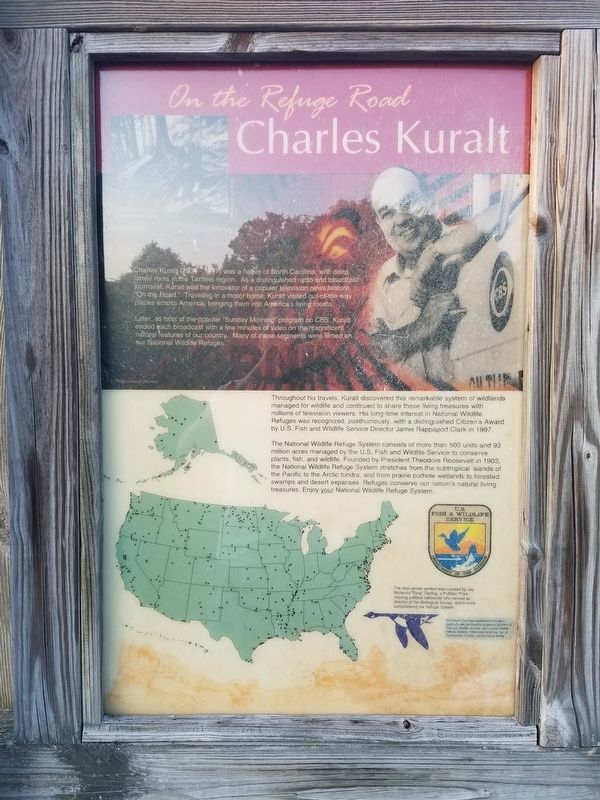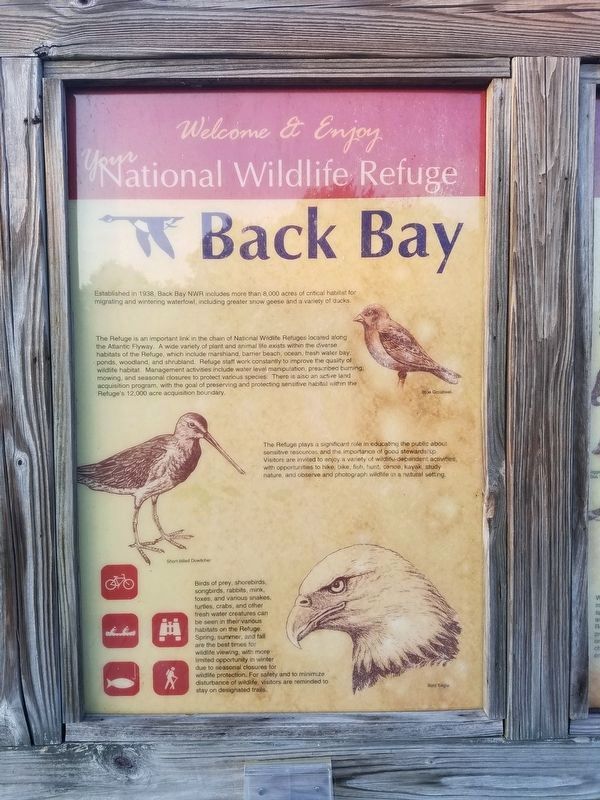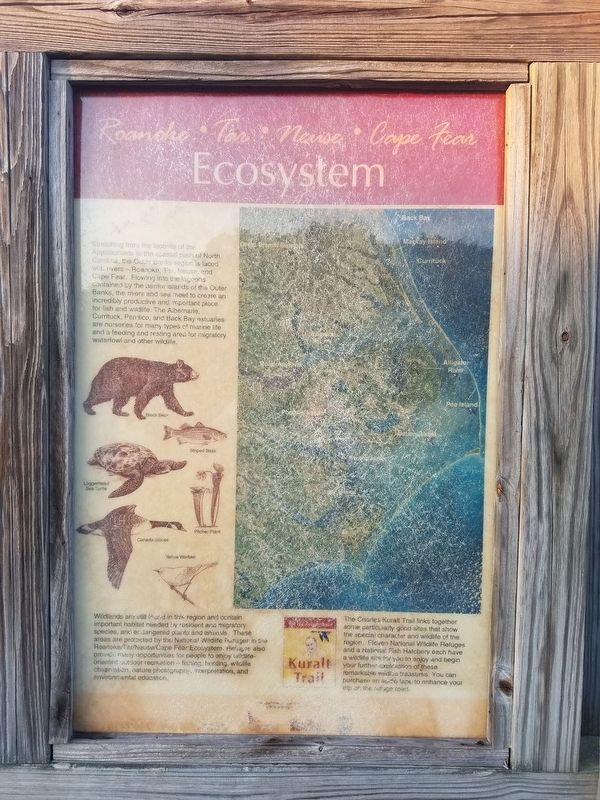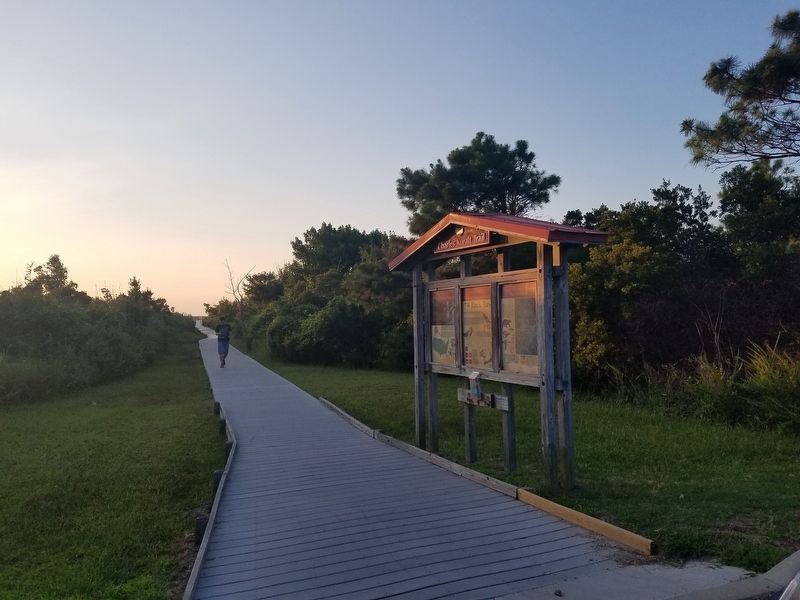Back Bay National Wildlife Refuge in Virginia Beach, Virginia — The American South (Mid-Atlantic)
Charles Kuralt
On the Refuge Road
Charles Kuralt (1934 - 1997) was a native of North Carolina with deep family roots in the Tarheel region. As a distinguished radio and broadcast journalist, Kuralt was the innovator of a popular television news feature, "On the Road." Traveling in a motor home, Kuralt visited out-of-the-way places across America, bringing them into America's living rooms.
Later, as host of the popular "Sunday Morning" program on CBS, Kuralt ended each broadcast with a few minutes of video on the magnificent natural features of our country. Many of these segments were filmed on our National Wildlife Refuges.
Throughout his travels, Kuralt discovered this remarkable system of wildlands managed for wildlife and continued to share these living treasures with millions of television viewers. His long-time interest in National Wildlife Refuges was recognized, posthumously, with a distinguished Citizen's Award by U.S. Fish and Wildlife Service Director Jamie Rappaport Clark in 1997.
The National Wildlife Refuge System consists of more than 500 units and 93 million acres managed by the U.S. Fish and Wildlife Service to conserve plants, fish and wildlife. Founded by President Theodore Roosevelt in 1903, the National Wildlife Refuge System stretches from the subtropical islands of the Pacific to the Arctic tundra, and from prairie pothole wetlands to forested swamps and desert expanses. Refuges conserve our nation's natural living treasures. Enjoy your National Wildlife Refuge System.
The blue goose symbol was created by Jay Norwood "Ding" Darling, a Pulitzer Prize-winning political cartoonist who served as director of the Biological Survey, which once administered the Refuge System.
The Kuralt Trail was established through a public-private partnership supported by the U.S. Fish and Wildlife Service, the Coastal Wildlife Refuge Society, Wilderness Graphics, Inc. of Tallahassee, Florida, and the Kuralt family.
Back Bay
Established in 1938, Back Bay NWR includes more than 8,000 acres of critical habitat for migrating and wintering waterfowl, including greater snow geese and a variety of ducks.
The Refuge is an important link in the chain of National Wildlife Refuges located along the Atlantic Flyway. A wide variety of plant and animal life exists withing the diverse habitats of the Refuge, which include marshland, barrier beach, ocean, fresh water bay, ponds, woodland, and shrubland. Refuge staff work constantly to improve the quality of wildlife habitat. Management activities include water level manipulation, prescribed burning, mowing, and seasonal closures to protect various species. There is also an active land acquisition program, with the goal of preserving and protecting sensitive habitat within the Refuge's 12,000 acre acquisition boundary.
The Refuge plays a significant role in educating the public about sensitive resources and the importance of good stewardship. Visitors are invited to enjoy a variety of wildlife-dependent activities, with opportunities to hike, bike, fish, hunt, canoe, kayak, study nature, and observe and photograph wildlife in a natural setting.
Birds of prey, shorebirds, songbirds, rabbits, mink, foxes, and various snakes, turtles, crabs, and other fresh water creatures can be seen in their various habitats on the Refuge. Spring, summer, and fall are the best times for wildlife viewing, with more limited opportunity in winter due to seasonal closures for wildlife protection. For safety and to minimize disturbance of wildlife, visitors are reminded to stay on designated trails.
Ecosystem
Stretching from the foothills of the Appalachians to the coastal plain of North Carolina, the Outer Banks region is laced with rivers - Roanoke, Tar, Neuse, and Cape Fear. Flowing into the lagoons contained by the barrier islands of the Outer Banks, the rivers and sea meet to create an incredibly productive and important place for fish and wildlife. the Albermarle, Currituck, Pamlico, and Back Bay estuaries are nurseries for many types of marine life and a feeding and resting area for migratory waterfowl and other wildlife.
Wildlands are still found in this region and contain important habitat needed by resident and migratory species, and endangered plants and animals. These areas are protected by the National Wildlife Refuges in the Roanoke/Tar/Neuse/Cape Fear Ecosystem. Refuges also provide many opportunities for people to enjoy wildlife-oriented outdoor recreation -- fishing, hunting, wildlife observation, nature photography, interpretation, and environmental education.
The Charles Kuralt Trail links together some particularly good sites that show the special character and wildlife of the region. Eleven National Wildlife Refuges and a National Fish Hatchery each have a wildlife site for you to enjoy and begin your further exploration of these remarkable wildlife treasures. You can purchase an audio tape to enhance your trip on the refuge road.
Erected by Fish and Wildlife Service, U.S. Department of the Interior.
Topics and series. This historical marker is listed in these topic lists: Arts, Letters, Music • Environment. In addition, it is included in the Former U.S. Presidents: #26 Theodore Roosevelt series list. A significant historical year for this entry is 1997.
Location. 36° 40.395′ N, 75° 54.974′ W. Marker is in Virginia Beach, Virginia. It is in Back Bay National Wildlife Refuge. Marker can be reached from the intersection of North Entrance Road and Sandpiper Road. Touch for map. Marker is in this post office area: Virginia Beach VA 23456, United States of America. Touch for directions.
Other nearby markers. At least 8 other markers are within 12 miles of this marker, measured as the crow flies. Peace Monument (approx. 9.2 miles away); Princess Anne County (approx. 9.4 miles away); Sgt. Miles James (approx. 9.4 miles away); Dividing Line (approx. 9.4 miles away in North Carolina); Eastern Shore Chapel (approx. 11.1 miles away); The Flame of Hope (approx. 11.2 miles away); Flame Of Hope (approx. 11.2 miles away); Tree of Hope (approx. 11.2 miles away). Touch for a list and map of all markers in Virginia Beach.
Credits. This page was last revised on August 27, 2023. It was originally submitted on July 19, 2016, by Kevin W. of Stafford, Virginia. This page has been viewed 528 times since then and 31 times this year. Last updated on August 27, 2023, by Carl Gordon Moore Jr. of North East, Maryland. Photos: 1, 2, 3, 4. submitted on July 19, 2016, by Kevin W. of Stafford, Virginia. • Bernard Fisher was the editor who published this page.



